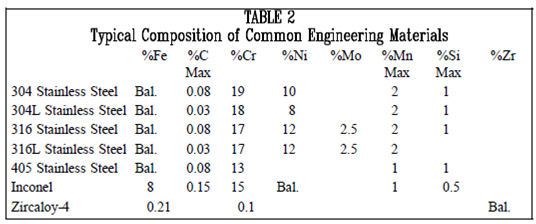Composition of common Engineering material:
The huge variety of structures, systems, and elements found in DOE nuclear facilities are made from many several categories of materials. Several of the materials are alloys along with a base metal of nickel, iron, or zirconium. The chosen of a material for a specific application is based on several factors involving the temperature and pressure which the material will be exposed to, the materials resistance to specific categories of corrosion, materials hardness and toughness, and other material properties.
One material which has huge application within the systems of DOE facilities is stainless steel. There are nearly 40 standard categories of stainless steel and several other specialized categories under several trade names. By the changes of the kinds and quantities of alloying elements, steel could be adapted to specific applications. Stainless steels are categorized as austenitic or ferritic based on their lattice structure. Austenitic stainless steels, involving 304 and 316, have a face- centered cubic structure of iron atoms along with the carbon in interstitial solid solution. Ferritic stainless steels, Involve type 405, have a body-centered cubic iron lattice and contain no nickel. Ferritic steels are simpler to weld and fabricate and are less susceptible to stress corrosion cracking than austenitic stainless steels. They have only moderate resistance to other categories of chemical attack.
Other metals which have specific applications in a few DOE nuclear facilities are zircaloy and inconel. The composition of these metals and several kinds of stainless steel are listed in Table below.
